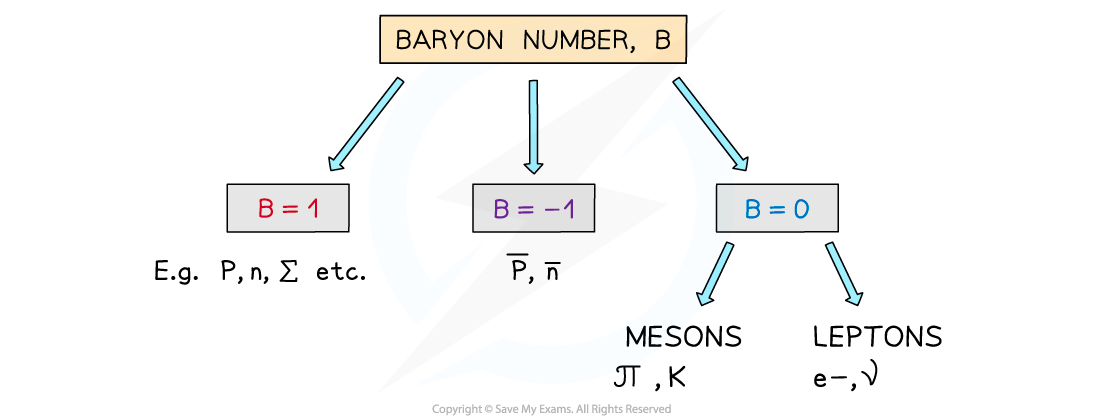- 翰林提供学术活动、国际课程、科研项目一站式留学背景提升服务!
- 400 888 0080
AQA A Level Physics复习笔记2.2.2 Baryons
Baryon Number
- The baryon number, B, is the number of baryons in an interaction
- B depends on whether the particle is a baryon, anti-baryon or neither
- Baryons have a baryon number B = +1
- Anti-baryons have a baryon number B = –1
- Particles that are not baryons have a baryon number B = 0
- Baryon number is a quantum number and is conserved in all interactions
- This is one of the indicators for whether an interaction is able to occur or not

The baryon number of a particle depends if it is a baryon, anti–baryon or neither
- The up (u), down (d) and strange (s) quark have a baryon number of 1/3 each
- This means that the anti–up, anti–down and anti–strange quarks have a baryon number of –1/3 each
- Note: The baryon number of each quark is provided on the datasheet
- The implication of this is that baryons are made up of all quarks and anti-baryons are made up of all anti-quarks
- There are no baryons (yet) that have a combination of quarks and anti-quarks eg. up, anti-down, down
- The reason being that this would equate to a baryon number that is not a whole number (integer)
Worked Example
Show that the baryon number is conserved in β– decay.

The Proton as a Baryon
- The proton is the most stable baryon
- This means it has the longest half-life of any baryon and is the particle which other baryons eventually decay to
- It is the most stable baryon because it is also the lightest baryon
- Radioactive decay occurs when heavier particles decay into lighter particles
- A decay of the proton would therefore violate the conservation of baryon number
- It is theorised that the proton has a half-life of around 1032 years and research experiments are still underway that are designed to detect proton decay
转载自savemyexams

最新发布
© 2025. All Rights Reserved. 沪ICP备2023009024号-1









